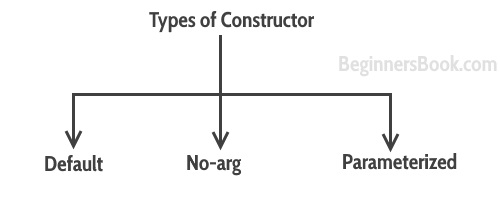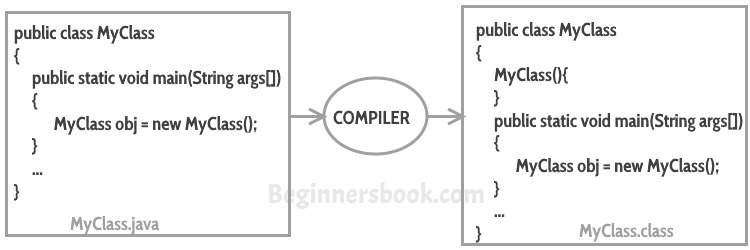oops
- The main aim of object-oriented programming is to implement real-world entities.
- Object-Oriented Programming is a methodology or paradigm to design a program using classes and objects. It simplifies software development and maintenance.
- Any entity that has state and behavior is known as an object.
- An Object can be defined as an instance of a class.
- An object contains an address and takes up some space in memory.
- Object is Dynamic memory allocation of class.
- Object is an encapsulated in form of all Non-static methods&Non-static variables of a particular class .
- The process "creating objects out of class" is known as instantiation.
Class
- It user defined data type in java.
- Collection of objects is called class. It is a logical entity.
- A class can also be defined as a blueprint from which you can create an individual object.Class doesn't consume any space.
- A class can also be defined as a blueprint that defines variables&methods common to all objects.
- Example↗:
In above programs variables are usn,name,email. Methods are reading,writing,playing.
1.Constructor
- Constructor(s) of a class must has same name as the class name.
- A constructor in Java can not be abstract, final, static and synchronized. Constructor has no return type.
- Constructor is a block of code that initializes the newly created object.
- A constructor resembles an instance method in java but it's not a method as it doesn't have a return type
Types of Constructors

Default constructor
- Java compiler inserts a default constructor into your code on your behalf. This constructor is known as default constructor.

No-arg constructor:
class Demo
{
public Demo()
{
System.out.println("This is a no argument constructor");
}
public static void main(String args[]) {
new Demo();
}
}
This is a no argument constructor
Parameterized constructor
public class Employee {
int empId;
String empName;
//parameterized constructor with two parameters
Employee(int id, String name){
this.empId = id;
this.empName = name;
}
void info(){
System.out.println("Id: "+empId+" Name: "+empName);
}
public static void main(String args[]){
Employee obj1 = new Employee(10245,"Chaitanya");
Employee obj2 = new Employee(92232,"Negan");
obj1.info();
obj2.info();
}
}
Id: 10245 Name: Chaitanya
Id: 92232 Name: Negan
Constructor Chaining
When A constructor calls another constructor of same class then this is called constructor chaining. Read more about it here.InheritanceConstructor overloading in Java
- Constructor overloading in Java is a technique of having more than one constructor with different parameter lists.
- They are arranged in a way that each constructor performs a different task.
- Inheritance in Java is a mechanism in which one object acquires all the properties and behaviors of a parent object.
Terms used in Inheritance
- Class: A class is a group of objects which have common properties. It is a template or blueprint from which objects are created.
- Sub Class/Child Class: Subclass is a class which inherits the other class. It is also called a derived class, extended class, or child class.
- Super Class/Parent Class: Superclass is the class from where a subclass inherits the features. It is also called a base class or a parent class.
- Reusability: As the name specifies, reusability is a mechanism which facilitates you to reuse the fields and methods of the existing class when you create a new class. You can use the same fields and methods already defined in the previous class.
Types of inheritance in java
Single Inheritance Example
When a class inherits another class, it is known as a single inheritance. In the example given below, Dog class inherits the Animal class, so there is the single inheritance.File: TestInheritance.javaOutput:barking... eating...Multilevel Inheritance Example
When there is a chain of inheritance, it is known as multilevel inheritance. As you can see in the example given below, BabyDog class inherits the Dog class which again inherits the Animal class, so there is a multilevel inheritance.File: TestInheritance2.javaOutput:weeping... barking... eating...Hierarchical Inheritance Example
When two or more classes inherits a single class, it is known as hierarchical inheritance. In the example given below, Dog and Cat classes inherits the Animal class, so there is hierarchical inheritance.File: TestInheritance3.javaOutput:meowing... eating...Q) Why multiple inheritance is not supported in java?
To reduce the complexity and simplify the language, multiple inheritance is not supported in java.Consider a scenario where A, B, and C are three classes. The C class inherits A and B classes. If A and B classes have the same method and you call it from child class object, there will be ambiguity to call the method of A or B class.Since compile-time errors are better than runtime errors, Java renders compile-time error if you inherit 2 classes. So whether you have same method or different, there will be compile time error.Test it NowCompile Time ErrorEncapsulation in Java
Encapsulation in Java is a process of wrapping code and data together into a single unit, for example, a capsule which is mixed of several medicines.
We can create a fully encapsulated class in Java by making all the data members of the class private. Now we can use setter and getter methods to set and get the data in it.
The Java Bean class is the example of a fully encapsulated class.
It provides you the control over the data. Suppose you want to set the value of id which should be greater than 100 only, you can write the logic inside the setter method. You can write the logic not to store the negative numbers in the setter methods.
It is a way to achieve data hiding in Java because other class will not be able to access the data through the private data members.
The encapsulate class is easy to test. So, it is better for unit testing.
The standard IDE's are providing the facility to generate the getters and setters. So, it is easy and fast to create an encapsulated class in Java.
Read-Only class
Now, you can't change the value of the college data member which is "AKG".
Write-Only class
